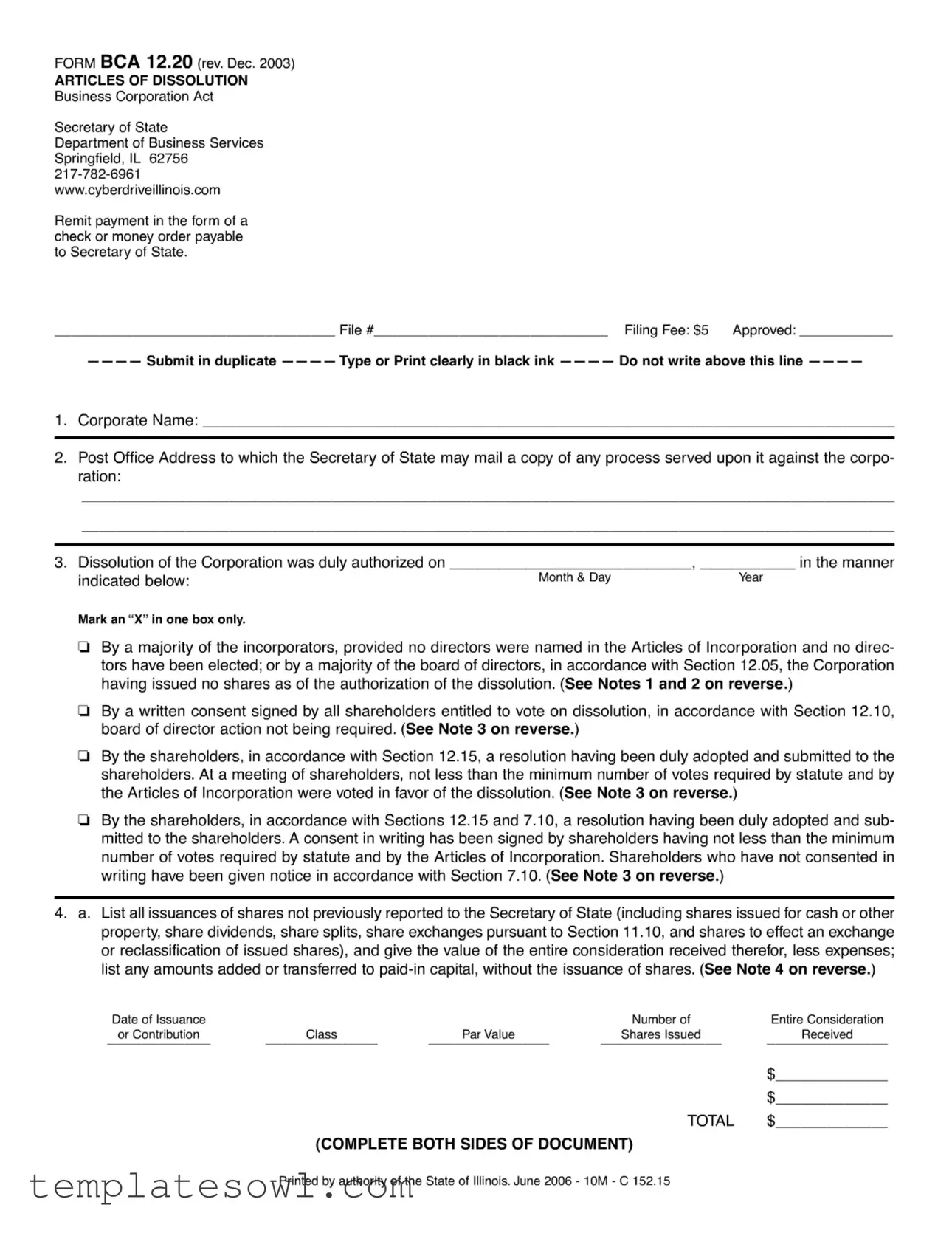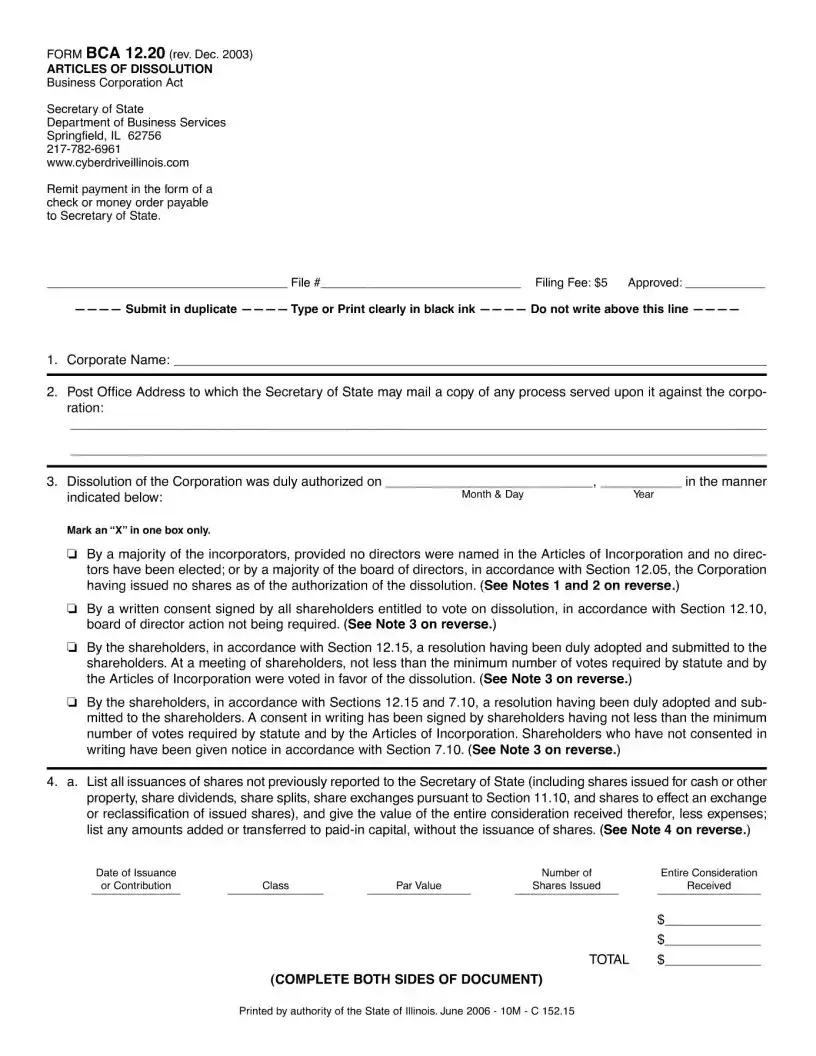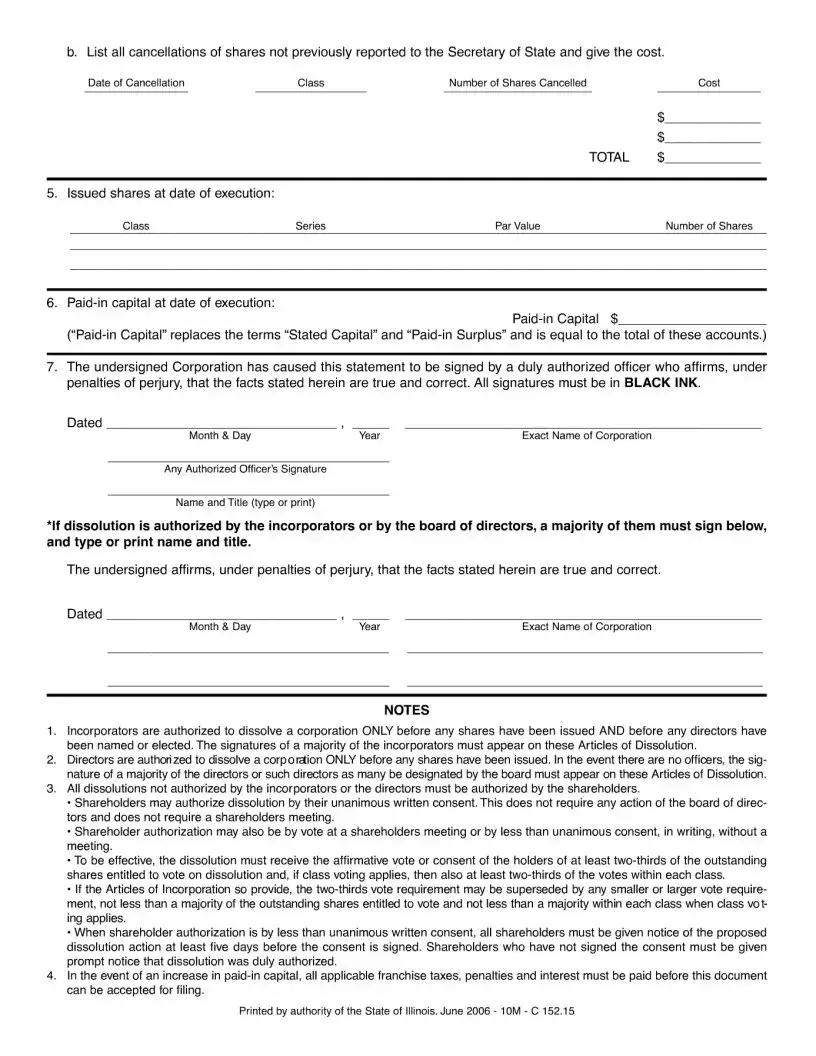What is the purpose of the Articles of Dissolution form?
The Articles of Dissolution form is used to officially dissolve a corporation in accordance with the Business Corporation Act. By filing this form, a corporation legally indicates that it has ceased operations and is no longer conducting business. It ensures that the dissolution is recognized by the Secretary of State and other relevant authorities.
What information is required on the Articles of Dissolution form?
The form requires several key pieces of information. This includes the corporate name, mailing address for any served processes, the method of dissolution, details about issued shares and any cancellations, and the signatures of authorized officers. Additionally, it is necessary to provide the date of issuance or cancellation of shares along with financial details related to those transactions.
What are the filing fees associated with the Articles of Dissolution?
The filing fee for the Articles of Dissolution is set at $5. Payments should be made in the form of a check or money order made payable to the Secretary of State. It is important to ensure that the payment accompanies the submission of the form, as the dissolution cannot be processed without this fee.
Who is authorized to file the Articles of Dissolution?
Only certain individuals can authorize the dissolution of a corporation. If no shares were issued, a majority of the incorporators or directors may authorize the dissolution. If shares have been issued, the shareholders must provide authorization, either through a unanimous written consent or by a properly noticed vote during a meeting.
What happens after the Articles of Dissolution are filed?
After the Articles of Dissolution are accepted for filing, the corporation is officially dissolved. The Secretary of State will mail a copy of the filed document back to the corporation at the address provided. The corporation must ensure it addresses any remaining debts, taxes, and obligations as it will no longer be considered an active business entity.
Can a corporation reverse the dissolution after filing the Articles of Dissolution?
Once the Articles of Dissolution are filed and the dissolution is effective, reversing this process is not straightforward. A corporation may need to follow a formal procedure to reinstate itself, which may involve filing for reinstatement and meeting specific legal requirements. It is advisable to consult with a legal professional for guidance if considering reinstatement after dissolution.


